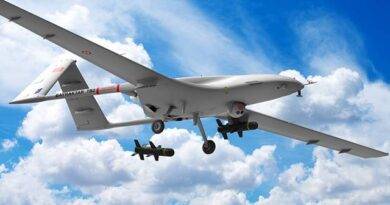The Pygmalion Effect in Aviation: How High Expectations Improve Pilot and Air Traffic Controller Performance
In aviation, high-stakes environments demand top-tier training and unwavering performance from both pilots and air traffic controllers (ATC). An often-overlooked psychological factor that can significantly impact performance is the Pygmalion Effect. Understanding and applying this effect in training can elevate aviation professionals’ performance and enhance safety.
What is the Pygmalion Effect?
The Pygmalion Effect, named after a Greek myth, is a psychological phenomenon where people perform better when others expect more from them. When teachers, leaders, or trainers hold high expectations for someone, they communicate these expectations, often unconsciously, through positive behaviors, encouragement, and feedback. These cues help the individual gain confidence, feel supported, and strive for excellence, thereby improving their performance.
This effect is widely observed in educational and organizational settings, where students and employees perform better under supportive, high-expectation guidance. In the aviation industry, the Pygmalion Effect can play a pivotal role in training, especially for pilots and ATCs, where the quality of training is directly linked to safety and performance.

How the Pygmalion Effect Works in Pilot Training
In pilot training, the Pygmalion Effect can significantly impact trainee performance. Here’s how it works:
- Positive Reinforcement: When instructors believe in a trainee’s potential, they often give positive feedback, fostering self-confidence in the trainee. This confidence allows the trainee to approach challenges with a problem-solving mindset rather than fear or hesitation.
- Encouragement to Take Risks: Pilots need to develop quick decision-making and problem-solving skills under pressure. Trainers who believe in their trainees’ capabilities may encourage them to make decisions independently, strengthening their skills and ability to handle high-pressure situations.
- Enhanced Learning Environment: A trainer who expects high performance is likely to create a supportive, respectful environment. This environment makes trainees feel comfortable asking questions and exploring areas where they might struggle, leading to a deeper understanding and skill mastery.
- Resilience Development: The aviation training journey can be grueling. A mentor who believes in the trainee’s potential can be instrumental in helping them bounce back from mistakes, view failures as learning opportunities, and persist through challenges.
The Pygmalion Effect in ATC Training
Air Traffic Controllers (ATCs) are under constant pressure, managing busy airspace and ensuring aircraft safety. The Pygmalion Effect is equally relevant in their training:
- Improved Focus and Accuracy: When trainers set high expectations, ATCs are more likely to improve their focus and accuracy. Instructors who believe in their trainees’ capabilities will challenge them with complex scenarios, helping them improve attention to detail and decision-making skills.
- Reduced Stress and Anxiety: The ATC environment is stressful, requiring quick thinking and calmness. A supportive trainer instills a sense of competence, reducing trainees’ anxiety. With less fear of failure, they can make clearer, faster decisions under pressure.
- Increased Situational Awareness: ATC trainees who are held to high standards are often guided to anticipate potential issues, improving their situational awareness. An instructor who expects success encourages trainees to think proactively, preparing them for real-world challenges.
- Enhanced Communication Skills: Communication is vital in air traffic control. When instructors expect professionalism and clarity, trainees tend to communicate more effectively. This expectation fosters precise, calm exchanges, which are critical for ATC effectiveness.
How the Pygmalion Effect Influences Aviation Professionals’ Performance
The Pygmalion Effect shapes the overall performance of aviation professionals by creating a foundation of confidence, resilience, and mastery. Here’s how it impacts their careers:
- Greater Confidence in High-Stakes Situations: High expectations in training build confidence, which is crucial for pilots and ATCs who work in high-stakes situations daily. Confidence cultivated through positive reinforcement allows them to make sound decisions swiftly and assertively.
- Enhanced Problem-Solving Skills: Aviation professionals trained under the Pygmalion Effect tend to approach problems with a solution-oriented mindset. This attitude is essential for pilots dealing with mechanical issues mid-flight or ATCs managing an unexpected airspace situation.
- Long-Term Skill Development: Trainees pushed to excel in training develop a habit of continuous learning and improvement, beneficial throughout their careers. This growth mindset is especially valuable as aviation technology and protocols constantly evolve.
- Increased Job Satisfaction: Supportive training environments lead to higher job satisfaction. Aviation professionals who felt encouraged and believed in during their training often view their jobs positively, reducing turnover rates and contributing to better safety outcomes industry-wide.
- Improved Communication and Team Dynamics: High expectations foster effective communication skills that are crucial in aviation. Pilots and ATCs must communicate efficiently with each other and with ground support, as well as collaborate under pressure. Training that emphasizes these skills improves coordination and team performance.

Applying the Pygmalion Effect in Aviation Training Programs
For aviation training programs to harness the Pygmalion Effect, instructors should focus on the following strategies:
- Set Clear, High Expectations: Instructors should communicate their belief in trainees’ potential and set high standards while offering the tools needed to achieve them.
- Provide Constructive Feedback: Regular, constructive feedback reinforces strengths and identifies areas for improvement without diminishing confidence.
- Encourage Resilience: Trainers should encourage trainees to view setbacks as growth opportunities, helping them build resilience essential for high-stakes situations.
- Build a Supportive Learning Environment: A positive, respectful training environment fosters open communication, where trainees feel comfortable sharing doubts and questions.
Conclusion: The Impact of the Pygmalion Effect on Aviation Safety and Excellence
The Pygmalion Effect is a powerful tool that can transform pilot and ATC training, fostering the development of confident, skilled, and resilient aviation professionals. By setting high expectations and providing supportive guidance, trainers can inspire trainees to meet or even exceed performance standards. This approach not only enhances individual performance but also contributes to safer, more efficient aviation operations overall. As the industry evolves, leveraging the Pygmalion Effect in training programs will be essential for cultivating the next generation of skilled and confident aviation professionals.
By understanding and applying the Pygmalion Effect in training, aviation professionals can be better prepared for the demands of their roles, leading to an aviation industry where excellence and safety are the norms.


